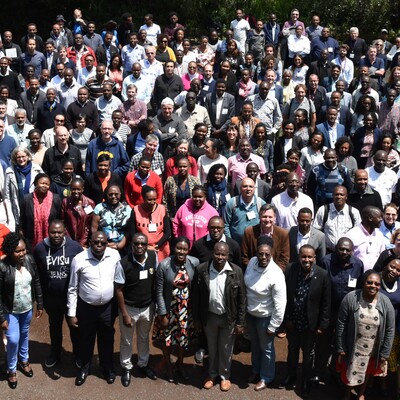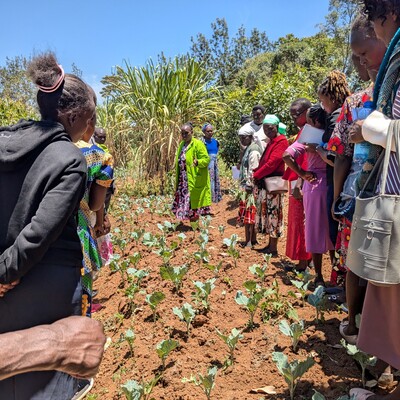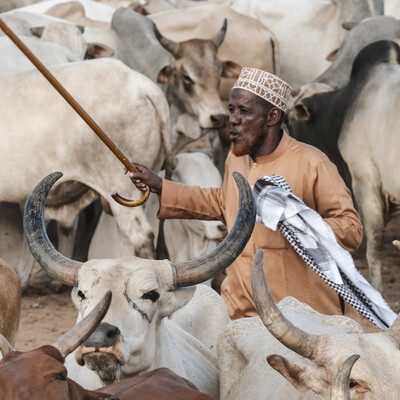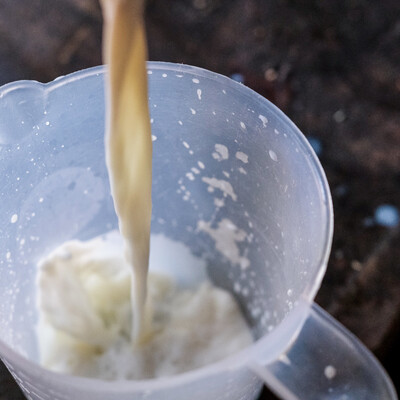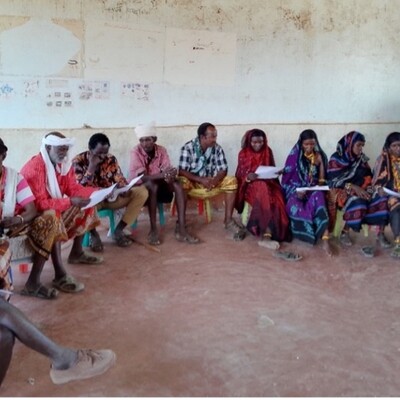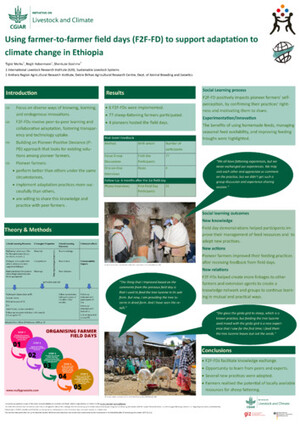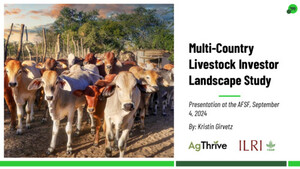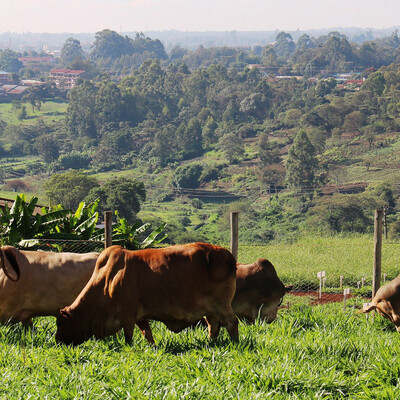
Researcher using skills gained at BecA-ILRI Hub to hasten adoption of improved Brachiaria grass varieties in Tanzania
With an area of 885,800 km2 and a population of 58,458,191 people, Tanzania is one of the largest and most populous countries in Africa. Crop and livestock farming is the main source of livelihood for most Tanzanians. The country’s large livestock population includes 25 million cattle, 16.7 million goats, and eight million sheep.
The main source of feeds for livestock in Tanzania is natural pastures, which are found in the country’s vast rangelands. But these feed sources are often of poor quality and insufficient, especially in the dry seasons. Additionally, conversion of natural pasture into crop production and non-agricultural use areas, and the degradation of pasture due to overgrazing and poor management have reduced the feed available to the country’s livestock.
One step towards addressing the shortage of quality animal feeds in Tanzania is by establishing the available alternative feed resources. Walter Mangesho, a senior livestock research officer at the Tanzania Livestock Research Institute (TALIRI) and a former Africa Biosciences Challenge Fund (ABCF) fellow at the Biosciences eastern and central Africa-International Livestock Research Institute (BecA-ILRI) Hub, is assessing the Brachiaria grass ecotypes in Tanzania and their morphological and genetic characterizations.
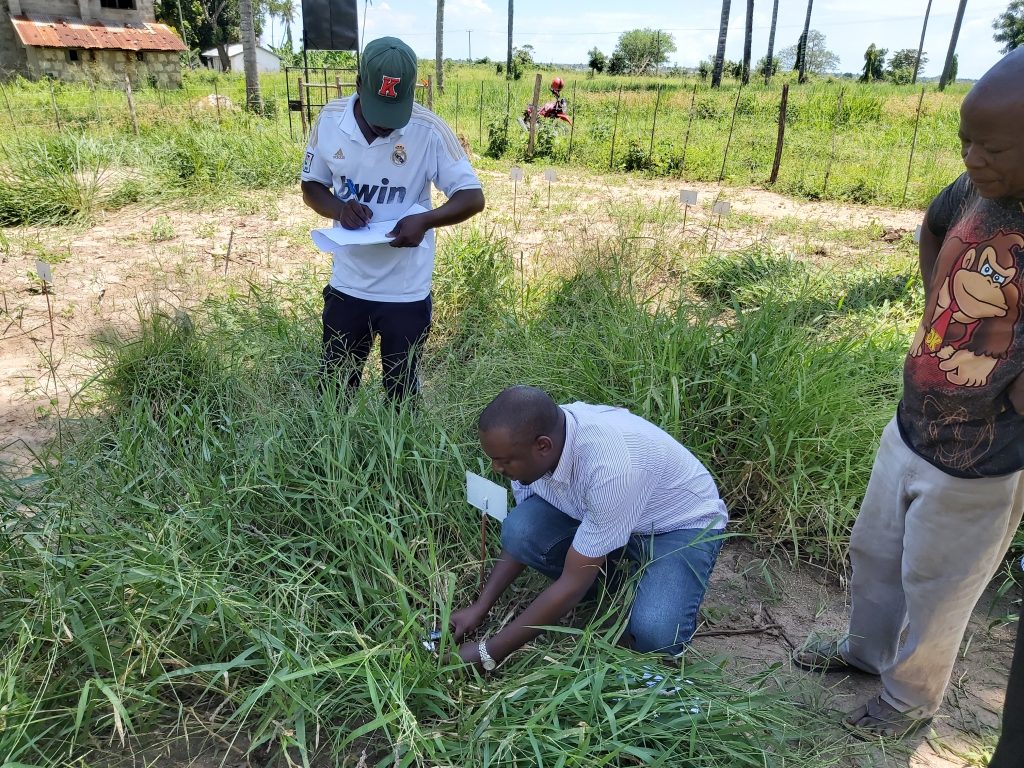 Mangesho collects morphological data (measuring culm thickness) of one Brachiaria ecotype. Standing is TALIRI Tanga field research assistant Salvatory Kavishe recording data
Mangesho collects morphological data (measuring culm thickness) of one Brachiaria ecotype. Standing is TALIRI Tanga field research assistant Salvatory Kavishe recording dataIn addition to establishing the types of Brachiaria grasses in the country; Mangesho’s research aims to improve selected Brachiaria grass cultivars, which have high biomass production potential, are nutritive to livestock and resilient to climate change. His goal is to avail the improved Brachiaria varieties to smallholder farmers in Tanzania who will use them as feed to improve the productivity of their animals. ‘I am determined to work towards solving the major livestock challenges in Tanzania, which include a shortage of quality feeds,’ he said
His research, which started in Dodoma, has so far identified and collected 142 Brachiaria ecotypes from 10 regions of Tanzania. These ecotypes are now maintained in a field at TALIRI in Tanga, Tanzania. All the ecotypes were characterized for morphological characteristics and genetic diversity. A subset of the ecotypes with superior phenotypes have been selected and are currently being multiplied for further evaluation.
‘While at the BecA-ILRI Hub, I worked with a team of highly-qualified researchers, mentors and trainers who helped me in molecular biology and genomics research that I had no prior experience with. They strengthened my morphological data collection skills,’ Mangesho remembers of his time as an ABCF fellow at BecA-ILRI Hub.
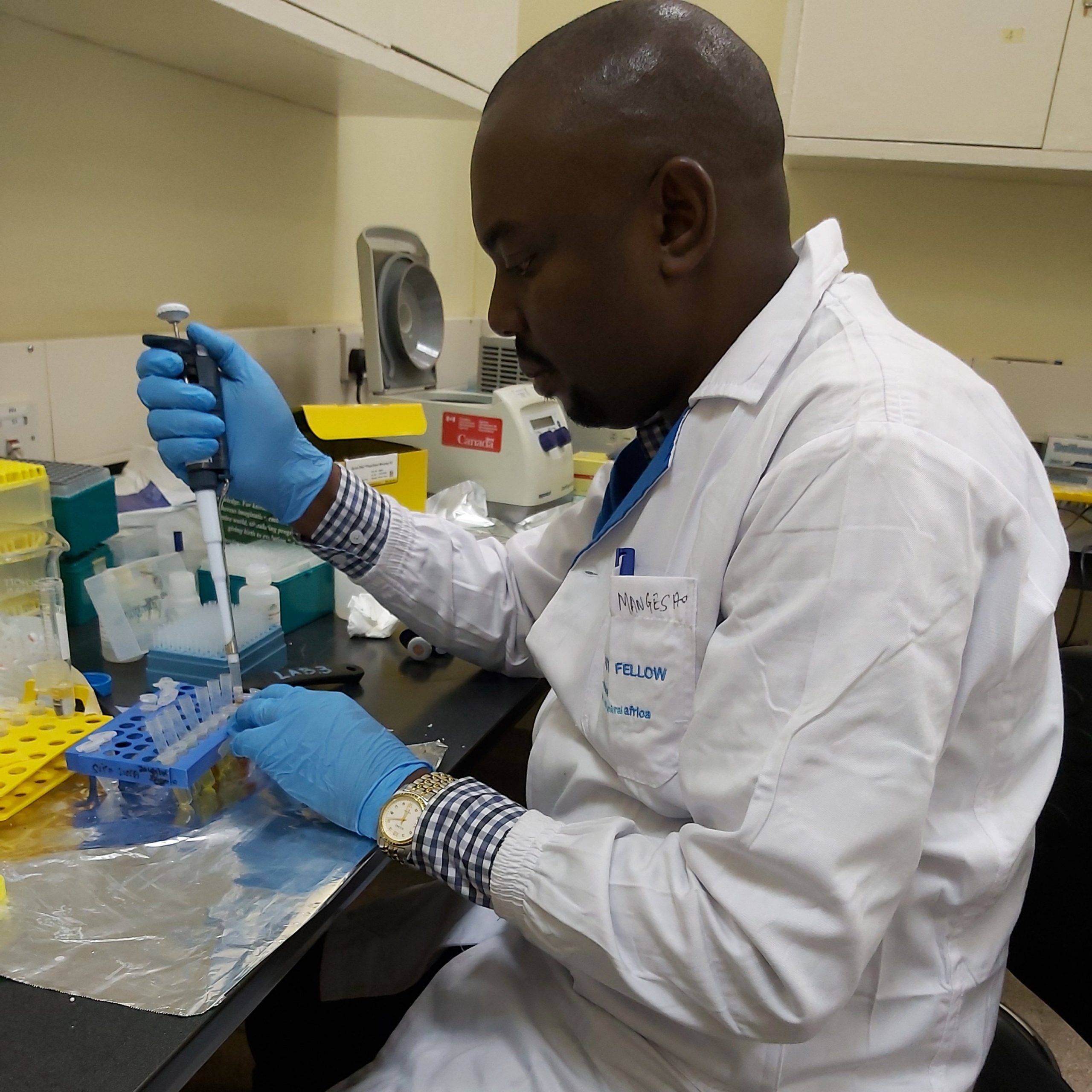 Mangesho trains on DNA extraction at BecA-ILRI Hub
Mangesho trains on DNA extraction at BecA-ILRI HubHe was supervised by BecA-ILRI Hub’s Sita Ghimire, Cathrine Ziyomo and Nasser Yao. Jonas Kizima from TALIRI and Angelo Mwilawa from Ministry of Livestock and Fisheries, Tanzania also supervised his genomic and morphological data collection while at the hub.
‘I hope to start multi-location trials in December 2020, once the Brachiaria cultivars are ready,’ remarks Mangesho about his next plans for the near future.





